A few recent arrivals to the lemp.
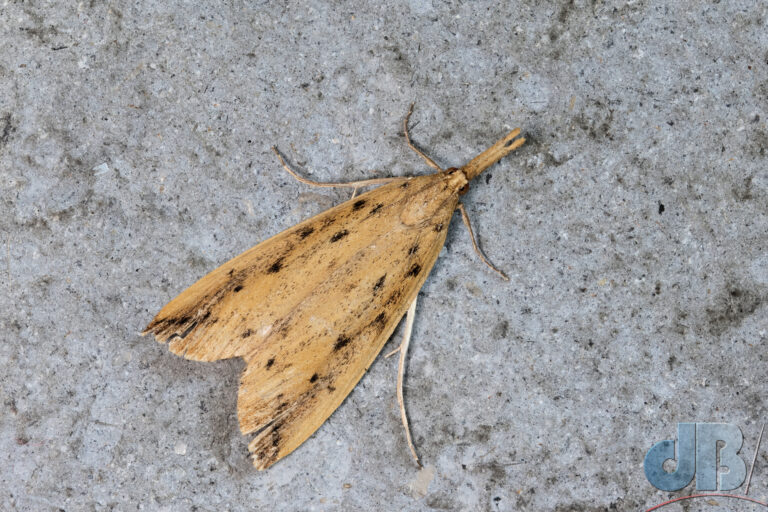
The lovely little creature above turned up in the garden on 1st June. It goes by the name of Schoenobius gigantella. That’s quite a mouthful for a small moth. It loosely translates as Giant Reed Dweller, but its “proper” common name is the Giant Water-veneer.
It is a lot bigger than its Crambid cousin, the Water Veneer (Acentria ephemerella) with a wingspan of 25-46mm compared to the latter’s 11-13mm S. gigantella is usually found in coastal reedbeds, but I’ve got a garden wildlife pond, so this one was presumably on holiday. This one seemed quite big while it was flying around the garden, but I didn’t measure it, so not sure if it’s as big as a female (up to 46mm) or the smaller male (about 25mm wingspan).
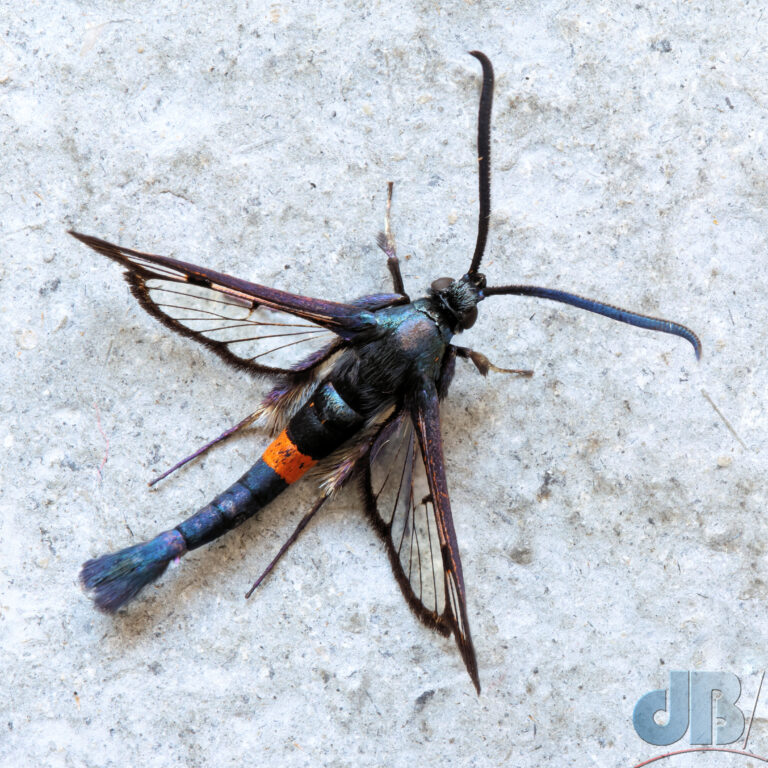
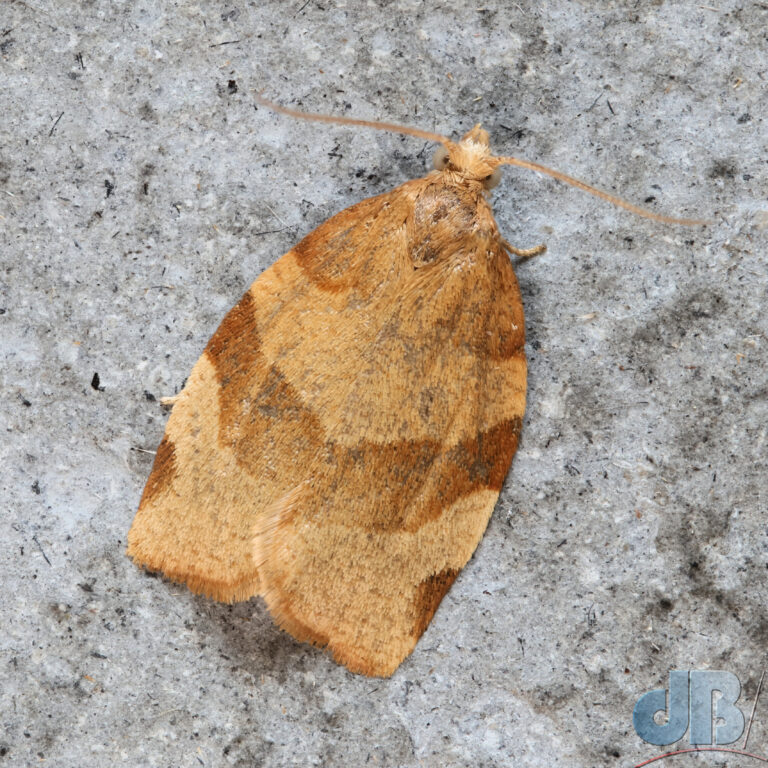
The above moth is the Barred Fruit-tree Tortrix.
Wings marked with a bar – tick.
Larvae eat fruit trees – tick.
Tortrix – huh?
Well, these moths are also known as leaf-rollers for the larval habit of wrapping themselves in a leaf for protection. Tortrix comes from the Latin verb meaning to twist; as does torque, the twisting force. The “ix” ending feminises the word, so it could be loosely translated as “she who twists”.
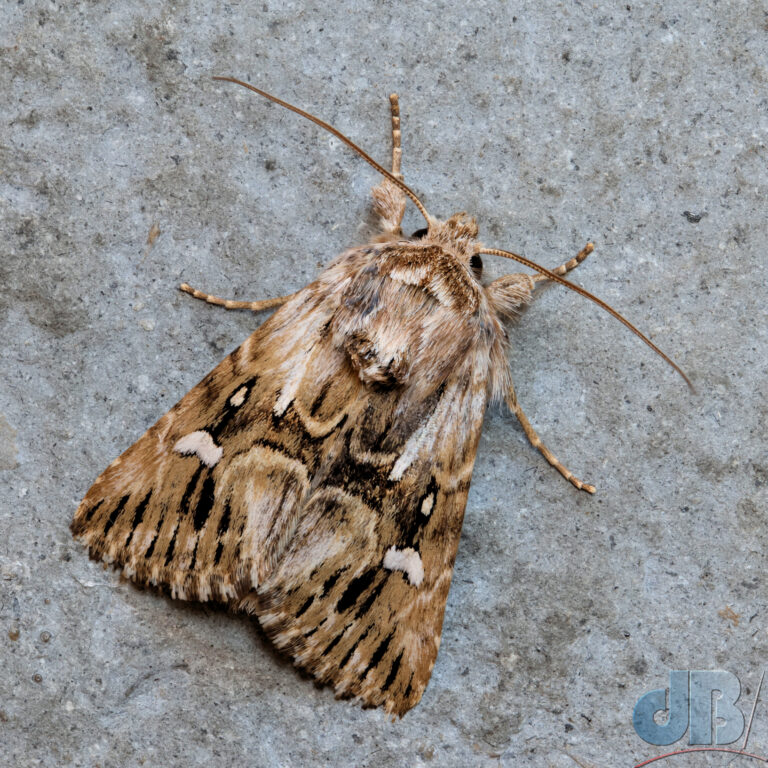
I see several Toadflax Brocade moths each summer, presumably because I encouraged Purple Toadflax to grow wild in the garden. First of the year was 29 May. Quite beautifully marked for a little owlet. First time I saw the species was a caterpillar crawling up our green waste wheelie bin, must have been the year before I first saw the adult moth.
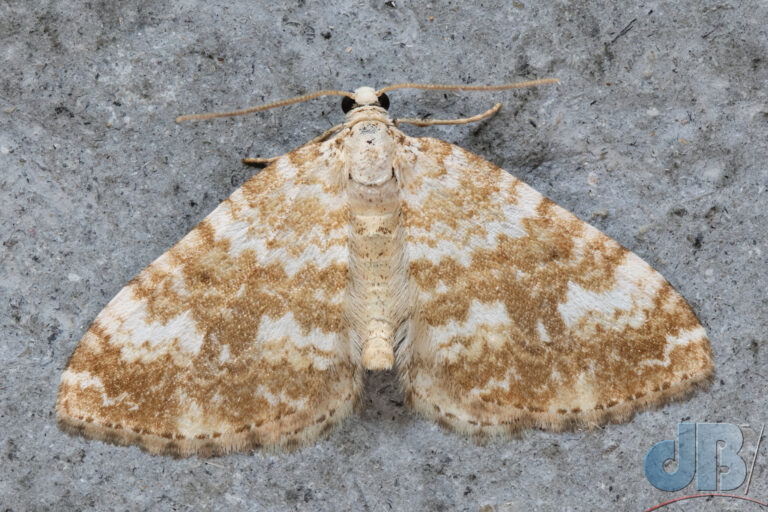
This is a Sandy Carpet. First time I’ve recorded one in seven years of mothing. There are lots of carpet moths, named because back in the day, carpets were beautifully pattered luxury items and the early entomologists wanted to honour these types of moth. They don’t eat carpets. Indeed, of the 2500+ moth species in the UK, just 2 or 3 have larvae that can digest natural fibres like wool or cotton.
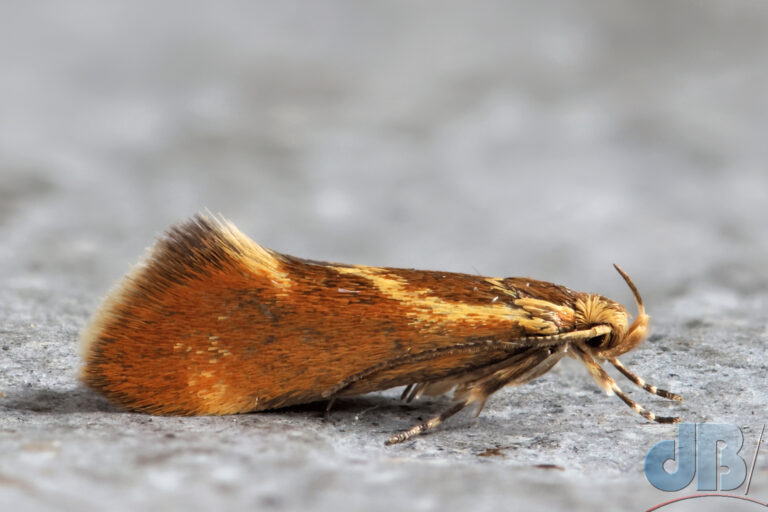
I mentioned the Italian Bark Moth in an item about scientific nomenclature, but it’s such a lovely micro moth that it deserved an encore.
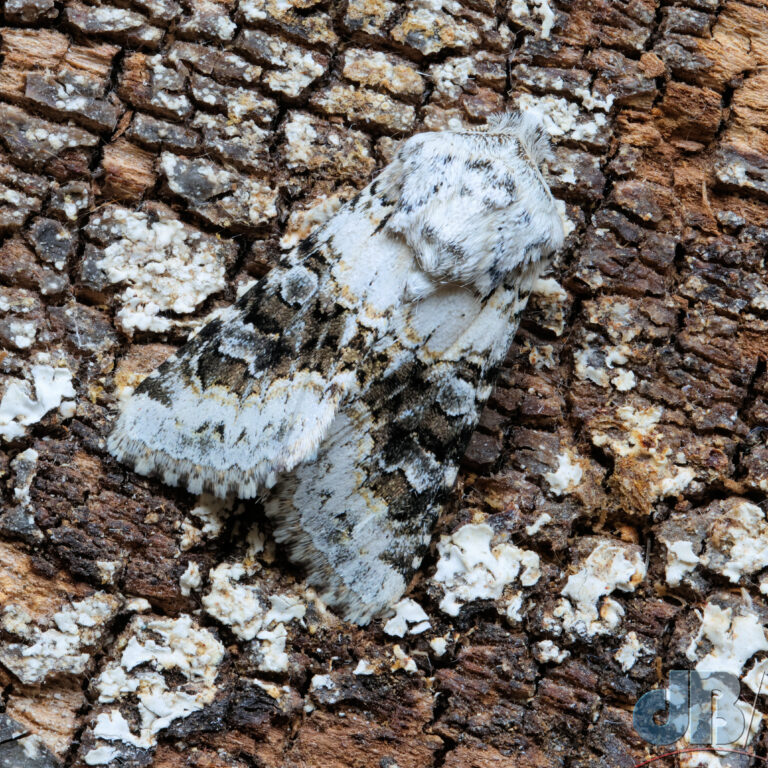
Above, a Broad-barred White almost disappears if you squint really hard looking at it resting on a lichen-covered log. Its scientific name is Hecatera bicolorata, the species part of which is almost as obvious in origin as its common name, simply meaning two-coloured. The genus name Hecatera, presumably comes from a Greek god associarted with night, the moon, and magic, Hecate.
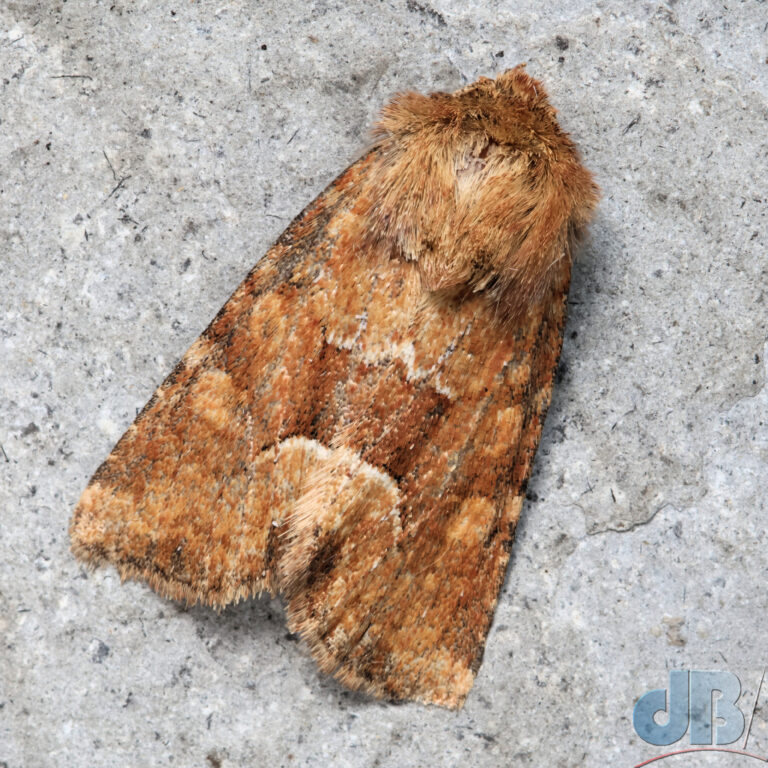
Middle-barred Minor, Oligia fasciuncula, is one of the smallest of the noctuid (owlet) moths. It’s a macro moth but at about 10mm long is smaller than many micro moths, just reinforcing the notion that size isn’t everything when it comes to macro vs micro lepidoptera. It’s all about evolutionary history rather than size, the micro moths being further down the family tree and so more ancient.
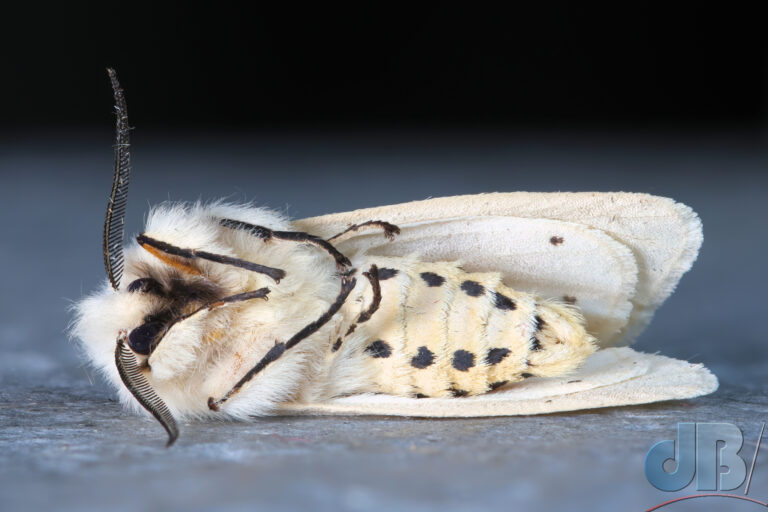
Lots of moths, and indeed other animals, will play dead if disturbed, hoping that a predator will ignore them as detritus rather than dinner. This White Ermine rolled on to its back, revealing its plushy-like spotted belly. Does anyone make moth soft toys? They should! White Ermine on its back, playing dead. It flipped over and flew away seconds after the photoshoot, Spilosoma lubricipeda. The genus name Spilosoma translates as spotted body and the species name lubricipeda means slippy foot. Nice.